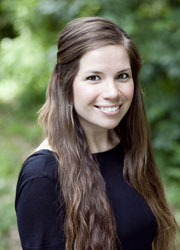It seems simple enough: the ability to keep your baby safe. However, specific statistics would beg the contrary. According to the nonprofit organization, Safe Kids Worldwide, “preventable injuries are the #1 killer of kids in the United States.” Possibly more shocking is where most of the injuries happen. “Every year, 2,200 children die from injuries that happen at home,” the organization reported. Sadly, a large percentage of these deaths are those of newborns to infants. Our youngest age groups are by far the most vulnerable.
What types of injuries are occurring, and more importantly, how can we prevent these from happening to our own children? According to a 2018 survey that the organization conducted, “8 in 10 unintentional injury deaths among infants resulted from suffocation.” However, suffocation is by no means the only category to be mindful of. Out of the 1,168 deaths that year, while 977 were due to suffocation, 80 were due to traffic accidents, 39 were drowning and 69 were “all other.” These sobering statistics involve infant death; however, many accidents also occur and are equally preventable. In 2018 alone, 253 hospitalizations from preventable injuries occurred for infants within the United States. With figures such as these, it is simple to see why the entire month of September has been dedicated to educating caretakers on the importance of baby safety.
Baby Safety Month was first introduced by the Juvenile Products Manufacturers Association (JPMA) in 1983 with “Expectant Mother’s Day.” In 1986, the day was increased to a week of celebration of baby safety. By the early 2000s, the organization decided to dedicate an entire month to safety awareness, with a focus on “safe sleeping practices.” Today, JPMA offers many toolkits for baby safety, specific to whatever one could be looking for. With all this in mind, read on for five of the top simple, yet effective ways to safeguard your home for your children.
Baby Safety Tip #1: Create a safe sleeping area for baby. Gone are the days when a baby’s crib was shrouded with lots of warm blankets and fluffy animals. Today’s baby sleep area is quite simple and plain. First, the crib or sleep area should meet current CPSC standards. Secondly, it should only have one tight-fitting crib sheet. (No fancy sheets needed here.) Thirdly, no pillows or even blankets should be allowed inside the crib. Finally, the child (from newborn age up to older infant), should be placed in some type of “sleep sack,” or swaddle, and placed on their back, never their stomach, to sleep. This final rule helps prevent suffocation and reduces SIDS.
Baby Safety Tip #2: Keep all cords out of reach. Any type of cord can quickly become a strangulation hazard to a young child. The rule of thumb here is simply to keep cords up and out of reach of children. You can do so by providing cordless window coverings in all homes where children live or visit. Also make sure to place cribs, beds, and furniture away from windows, since children can climb on them and gain access to window blind cords. Lastly, keep all cribs at least three feet away from cords that the child may reach while inside the crib.
Baby Safety Tip #3: Become educated on water safety. Drowning is the leading cause of unintentional death for children ages one to four. This considered, water safety should also be a part of one’s baby safety plan. First, it is vital to never leave a child unattended in or near water. Next, install proper barriers, covers and alarms on and around your pool and spa. Consider enrolling in approved baby swim classes, which allow children of all ages to learn how to stay safe in the water. Finally, it should also be mentioned that all caretakers should contemplate becoming certified in CPR.
Baby Safety Tip #4: Baby gates should be used frequently. A few small steps can become a deadly hazard for a newly crawling or walking baby. Make sure to utilize baby gates whenever there is an area where a child could possibly fall. This typically includes at the top and bottom of stairs, yet baby gates can also be used to block off possibly dangerous areas of the house, such as the bathroom, kitchen, laundry room, outside area, etc.
Baby Safety Tip #5: Research safe baby products. As much as nearly all manufacturers strive for safety, there still is a chance that not every item in your home is baby proof. Educate yourself on what poses a threat to your baby, and make sure it is out far out of reach. Interested in a new, fun product? Make sure that it meets all required safety standards. While the research may be an extra step to take, peace of mind knowing your child’s safe is invaluable.



















